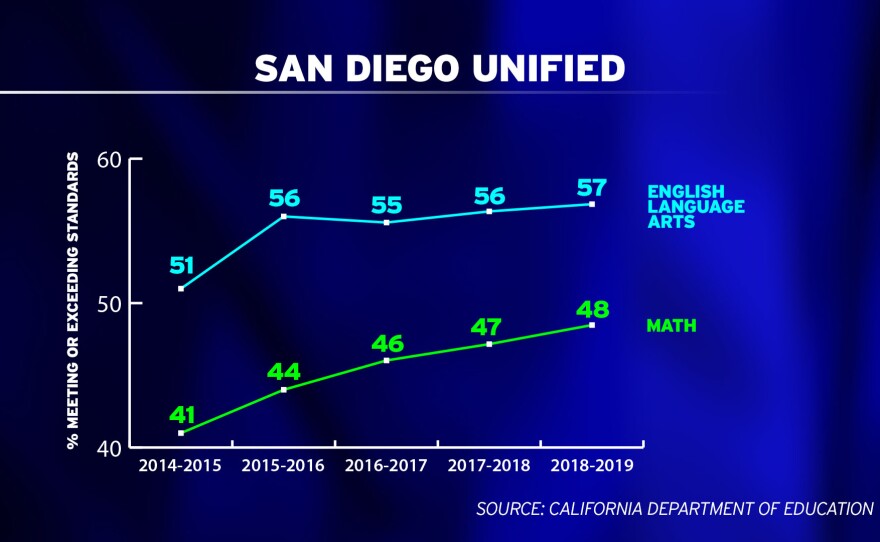Two independent studies last month praised San Diego Unified School District for its successes with disadvantaged students and preparing more students for college. Standardized test scores released last week add to this positive picture.
San Diego Unified’s students beat out state and county averages on 2019’s state testing, raising math scores for the fifth year in a row.

However, some performance gaps between individual schools are growing.
“The district is doing some really positive things, but it’s clear there’s still work that needs to be done,” said Joe Bishop, a professor of education at UCLA, who authored a September report on increasing college readiness rates at San Diego Unified.
Another study published by the Learning Policy Institute found that the district has prioritized staff training and equity-minded instruction.
Some of the district’s elementary schools raised the percentage of students meeting or exceeding standards by up to 30 percentage points since last year. Benito Juarez Elementary in Serra Mesa saw 10-point increases in both math and English Language Arts.
“The teachers are extremely committed to the students from day one,” said Helen Tocco, interim principal at Juarez Elementary.
“They’re establishing relationships with students in a positive manner,” she said. “However, there’s an academic focus from the very beginning.”
But some gaps have gotten bigger between the high schools with the highest and lowest test scores. The gap in math scores between Lincoln High, the lowest scoring comprehensive high school in the district, and Scripps Ranch High, the highest scoring, has grown by almost 20 percentage points since the test was first implemented in 2015.

English Language Arts scores have fluctuated at Lincoln High School, but a gap separating it from the two of the highest-scoring schools, Mira Mesa and Scripps Ranch, persists.

Experts, however, say good test scores are not an effective measure of student talent.
“They tend to be a better measure of access to opportunity and income than anything else,” said Luke Wood, a professor of education at San Diego State University.
The demographic data at these three schools support this claim. In the 2018-2019 school year, 87.2% of Lincoln’s students were considered socioeconomically disadvantaged, meaning they qualified for free and reduced-price lunch. Compare that to 45.3% at Mira Mesa High, 15.1% at Scripps Ranch High and 45.3% districtwide.
Lincoln High also contains a greater proportion of African American and Latino students. Achievement gaps for these groups are prevalent throughout the country, but Wood said growing gaps should raise an alarm. He said San Diego Unified needs to prepare teachers to engage the struggling student populations.
But with the school choice application currently open at San Diego Unified, Tocco and Wood say that parents shouldn’t pick a school just for its test scores.
“I always believe that even if you have a school that’s performing at the highest level, that doesn’t mean it’s going to be a healthy school for students who come from minoritized backgrounds,” Wood said. “Put your child in a school that’s going to be healthy for that child, that’s going to care about them, where you're going to have teachers who care about them.”






